A Flexible 7-in-1 Microsensor Embedded in a Hydrogen/Vanadium Redox Battery for Real-Time Microscopic Measurements
Abstract
:1. Introduction
2. Development of the Flexible 7-in-1 Microsensor
- (a)
- First of all, the PI film was cleaned with acetone and methanol organic solutions, respectively, and the residual methanol was removed by DI water. The surface dust and residual oil and fat were removed to enhance the adhesive ability of the thin film metal.
- (b)
- AZP4620 was coated, and the electrode patterns of micro hydrogen, electrical conductivity, temperature, pressure lower electrode, voltage, current, and flow sensors were defined by using photolithography.
- (c)
- Cr and Au were evaporated by an E-beam evaporator as the adhesion layer and sensing electrode layer.
- (d)
- LTC 9320 was coated as the protection layer after lift-off using acetone. The sensing areas and pins of micro voltage, current, and hydrogen sensors were defined by using the photolithography process so that they were exposed and not covered by the protection layer.
- (e)
- LTC 9305 was coated as a dielectric layer after the protection layer, and the sensing areas of micro-pressure were defined by using the photolithography process.
- (f)
- AZP 4620 was coated, and the upper electrode pattern of the micro pressure sensor was defined by using the photolithography process. Acetone was used for lift-off.
- (g)
- AZP4620 was coated, and the micro hydrogen sensor pattern was defined. The tin dioxide and Pt were evaporated on the micro hydrogen sensor, and acetone was used for lift-off. The production of a flexible 7-in-1 microsensor was completed. Figure 2 shows the optical micrograph of the flexible 7-in-1 microsensor.
3. Calibrations of the Flexible 7-in-1 Microsensor
3.1. Temperature Calibration of Flexible 7-in-1 Microsensor
3.2. Pressure Calibration of the Flexible 7-in-1 Microsensor
3.3. Flow Calibration of the Flexible 7-in-1 Microsensor
3.4. Voltage, Current, and Electrical Conductivity Calibration of Flexible 7-in-1 Microsensor
3.5. Hydrogen Calibration of Flexible 7-in-1 Microsensor
4. Development of Hydrogen/Vanadium Redox Battery
4.1. Hydrogen/Vanadium Redox Battery Design
4.2. Metal Collector Plate, End Plate, and Flow-Field Plate
5. Flexible 7-in-1 Microsensor Embedded in Hydrogen/Vanadium Redox Battery
5.1. Internal Voltage Measurement during Charging of Hydrogen/Vanadium Redox Battery
5.2. Internal Current Measurement during Charging of Hydrogen/Vanadium Redox Battery
5.3. Internal Electrical Conductivity Measurement during Charging of Hydrogen/Vanadium Redox Battery
5.4. Internal Temperature Measurement during Charging of Hydrogen/Vanadium Redox Battery
5.5. Internal Flow Measurement of Hydrogen/Vanadium Redox Battery
5.6. Internal Pressure Measurement of Hydrogen/Vanadium Redox Battery
5.7. Internal Hydrogen Measurement of Hydrogen/Vanadium Redox Battery
6. Conclusions
Author Contributions
Funding
Data Availability Statement
Acknowledgments
Conflicts of Interest
References
- Available online: https://www.moea.gov.tw/Mns/populace/news/News.aspx?kind=1&menu_id=40&news_id=102739 (accessed on 16 September 2022).
- Wang, C.-K.; Lee, C.-M.; Hong, Y.-R.; Cheng, K. Assessment of Energy Transition Policy in Taiwan—A View of Sustainable Development Perspectives. Energies 2021, 14, 4402. [Google Scholar] [CrossRef]
- Hsu, N.-Y.; Devi, N.; Lin, Y.-I.; Hu, Y.-H.; Ku, H.-H.; Arpornwichanop, A.; Chen, Y.-S. Study on the effect of electrode configuration on the performance of a hydrogen/vanadium redox flow battery. Renew. Energy 2022, 190, 658–663. [Google Scholar] [CrossRef]
- Yufit, V.; Hale, B.; Matian, M.; Mazur, P.; Brandon, N.P. Development of a Regenerative Hydrogen-Vanadium Fuel Cell for Energy Storage Applications. J. Electrochem. Soc. 2013, 160, A856–A861. [Google Scholar] [CrossRef]
- Dewage, H.H.; Yufit, V.; Brandon, N.P. Study of Loss Mechanisms Using Half-Cell Measurements in a Regenerative Hydrogen Vanadium Fuel Cell. J. Electrochem. Soc. 2016, 163, A5236–A5243. [Google Scholar] [CrossRef] [Green Version]
- Dowd, R.P., Jr.; Ying, A.; Van Nguyen, T. Preliminary study of a reversible hydrogen-vanadium flow battery. ECS Trans. 2016, 72, 11–17. [Google Scholar] [CrossRef]
- Tenny, K.M.; Lakhanpal, V.S.; Dowd, R.P.; Yarlagadda, V.; Van Nguyen, T. Impact of Multi-Walled Carbon Nanotube Fabrication on Carbon Cloth Electrodes for Hydrogen-Vanadium Reversible Fuel Cells. J. Electrochem. Soc. 2017, 164, A2534–A2538. [Google Scholar] [CrossRef]
- Dowd, R.P., Jr.; Ying, A.; Van Nguyen, T. Performance evaluation of a hydrogen-vanadium reversible fuel cell. J. Electrochem. Soc. 2017, 164, 564–567. [Google Scholar] [CrossRef]
- Dowd, R.P., Jr.; Verma, A.; Li, Y.; Powers, D.; Wycisk, R.; Pintauro, P.N.; Van Nguyen, T. A Hydrogen-Vanadium Reversible Fuel Cell Crossover Study. J. Electrochem. Soc. 2017, 164, F1608–F1614. [Google Scholar] [CrossRef] [Green Version]
- Muñoz, C.A.P.; Dewage, H.H.; Yufit, V.; Brandon, N.P. A Unit Cell Model of a Regenerative Hydrogen-Vanadium Fuel Cell. J. Electrochem. Soc. 2017, 164, F1717–F1732. [Google Scholar] [CrossRef]
- Rubio-Garcia, J.; Cui, J.; Parra-Puerto, A.; Kucernak, A. Hydrogen/vanadium hybrid redox flow battery with enhanced electrolyte concentration. Energy Storage Mater. 2020, 31, 1–10. [Google Scholar] [CrossRef]
- Hu, C.; Dong, Y.; Zhang, W.; Zhang, H.; Zhou, P.; Xu, H. Clean preparation of mixed trivalent and quadrivalent vanadium electrolyte for vanadium redox flow batteries by catalytic reduction with hydrogen. J. Power Sources 2022, 555, 232330–232340. [Google Scholar] [CrossRef]
- Chakrabarti, B.; Yufit, V.; Kavei, A.; Xia, Y.; Stevenson, G.; Kalamaras, E.; Luo, H.; Feng, J.; Tariq, F.; Taiwo, O.; et al. Charge/discharge and cycling performance of flexible carbon paper electrodes in a regenerative hydrogen/vanadium fuel cell. Int. J. Hydrogen Energy 2019, 44, 30093–30107. [Google Scholar] [CrossRef]
- Pino-Muñoz, C.A.; Chakrabarti, B.K.; Yufit, V.; Brandon, N.P. Characterization of a regenerative hydrogen-vanadium fuel cell using an experimentally validated unit cell mode. J. Electrochem. Soc. 2019, 166, A3511–A3524. [Google Scholar] [CrossRef]
- Ding, C.; Ni, X.; Li, X.; Xi, X.; Han, X.; Bao, X.; Zhang, H. Effects of phosphate additives on the stability of positive electrolytes for vanadium flow batteries. Electrochim. Acta 2015, 164, 307–314. [Google Scholar] [CrossRef]
- Zhou, X.; Zhao, T.; An, L.; Zeng, Y.; Yan, X. A vanadium redox flow battery model incorporating the effect of ion concentrations on ion mobility. Appl. Energy 2015, 158, 157–166. [Google Scholar] [CrossRef]
- Tang, A.; Bao, J.; Skyllas-Kazacos, M. Dynamic modelling of the effects of ion diffusion and side reactions on the capacity loss for vanadium redox flow battery. J. Power Sources 2011, 196, 10737–10747. [Google Scholar] [CrossRef]
- Rahman, F.; Skyllas-Kazacos, M. Evaluation of additive formulations to inhibit precipitation of positive electrolyte in vanadium battery. J. Power Sources 2017, 340, 139–149. [Google Scholar] [CrossRef]
- Baumgartner, W.; Parz, P.; Fraser, S.; Wallnöfer, E.; Hacker, V. Polarization study of a PEMFC with four reference electrodes at hydrogen starvation conditions. J. Power Sources 2008, 182, 413–421. [Google Scholar] [CrossRef]
- Jiang, H.; Sun, J.; Wei, L.; Wu, M.; Shyy, W.; Zhao, T. A high power density and long cycle life vanadium redox flow battery. Energy Storage Mater. 2020, 24, 529–540. [Google Scholar] [CrossRef]
- Su, A.; Weng, F.-B.; Hsu, C.-Y.; Chen, Y.-M. Studies on flooding in PEM fuel cell cathode channels. Int. J. Hydrogen Energy 2006, 31, 1031–1039. [Google Scholar] [CrossRef]
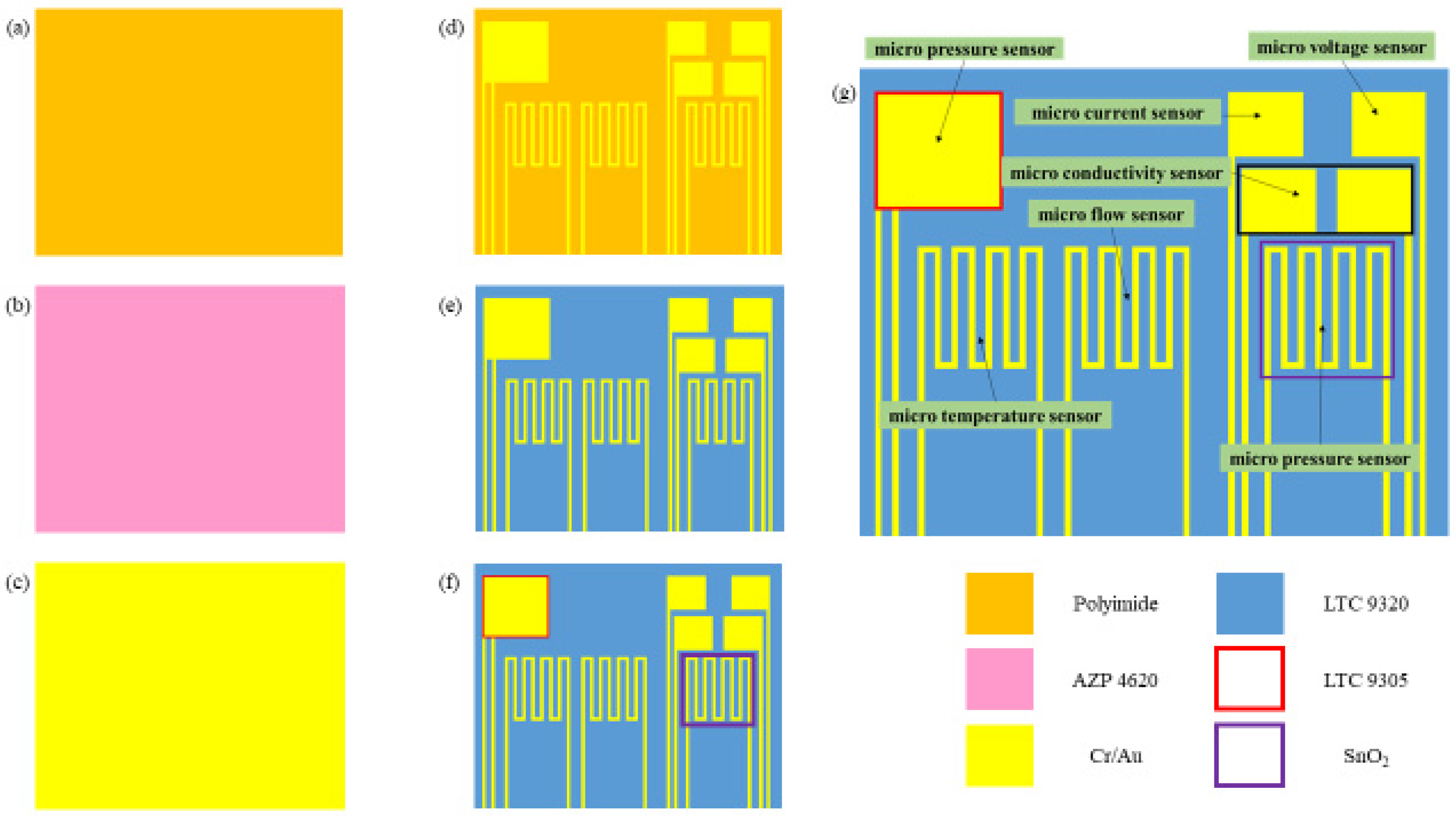
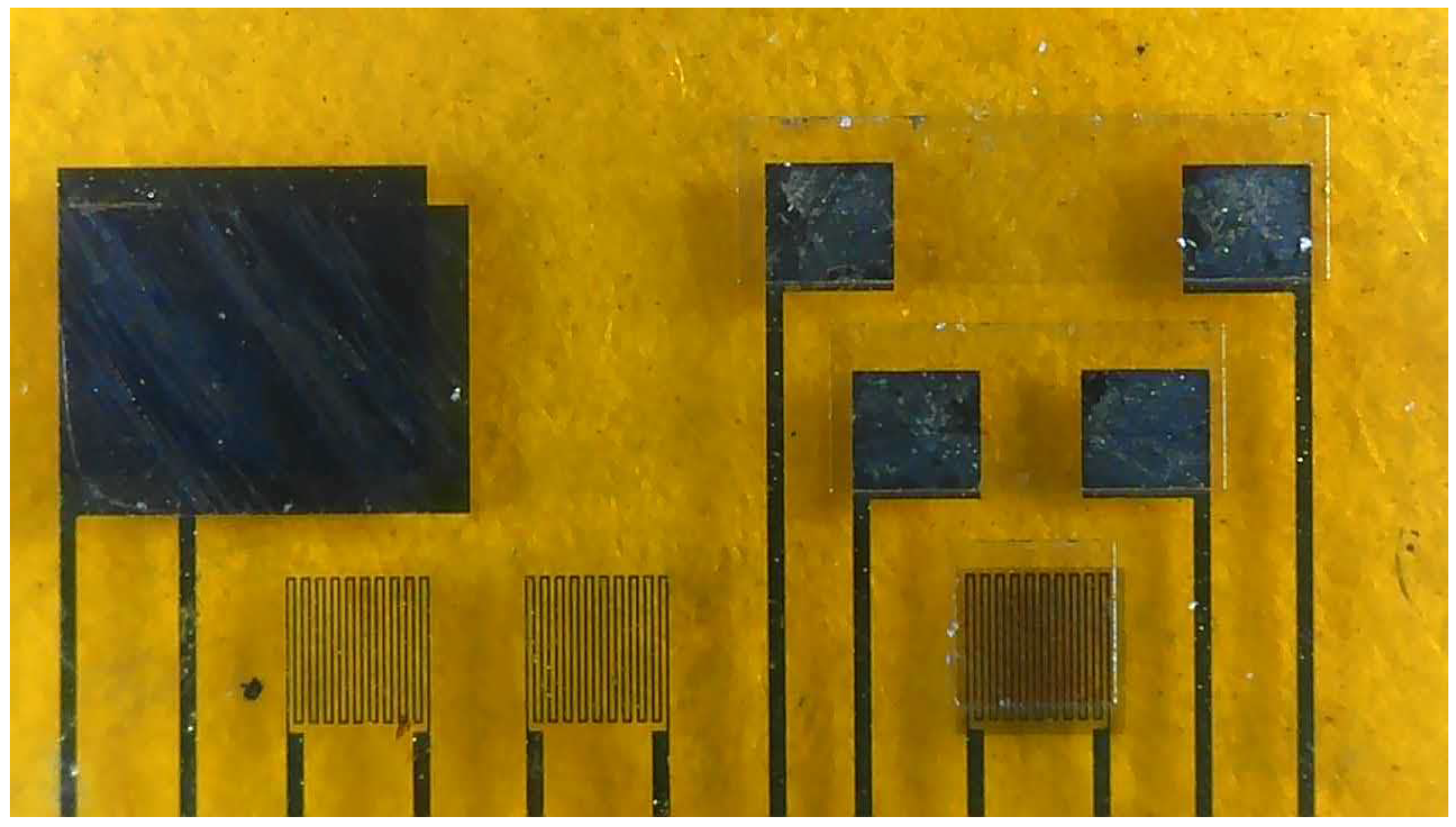
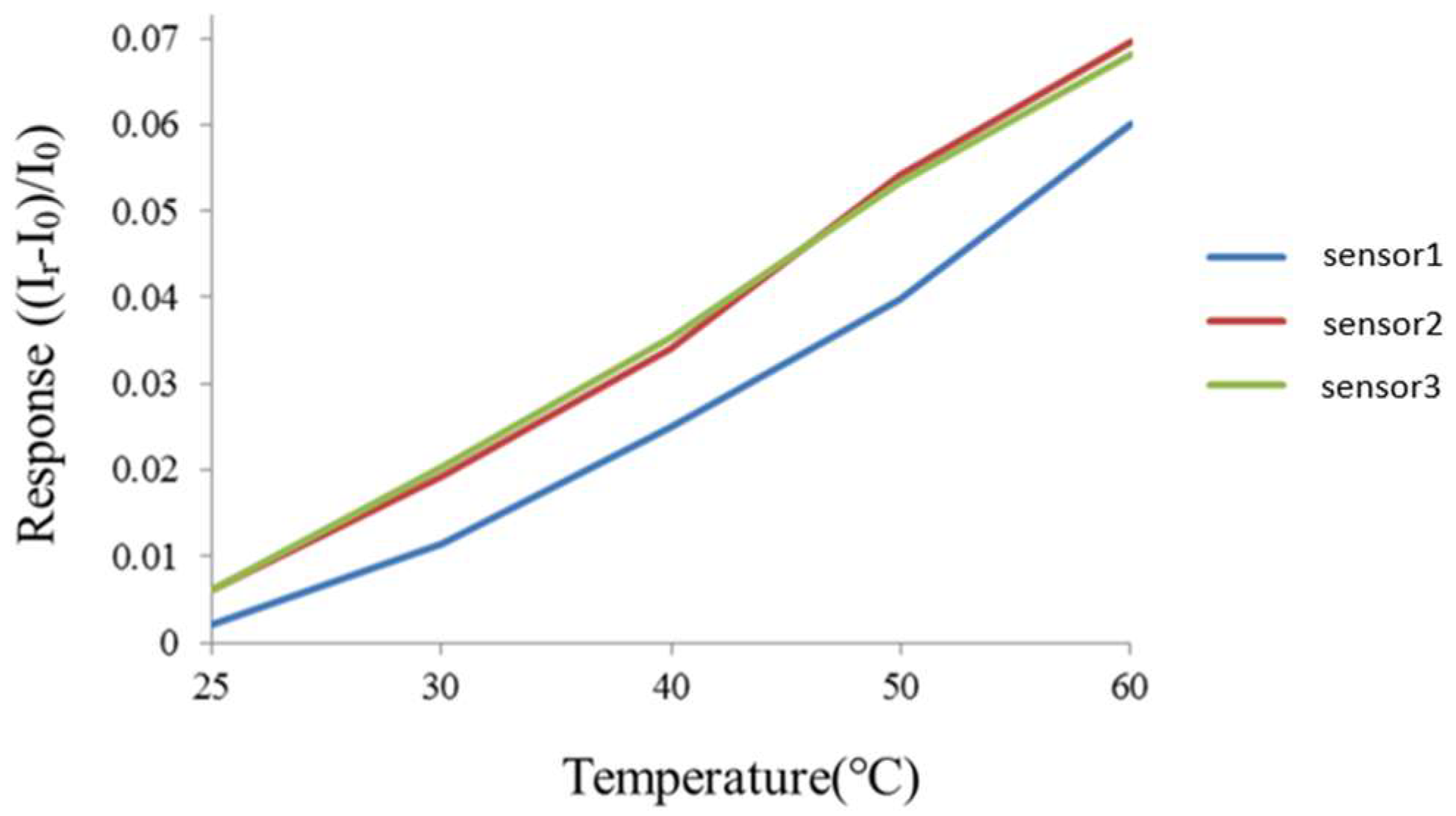
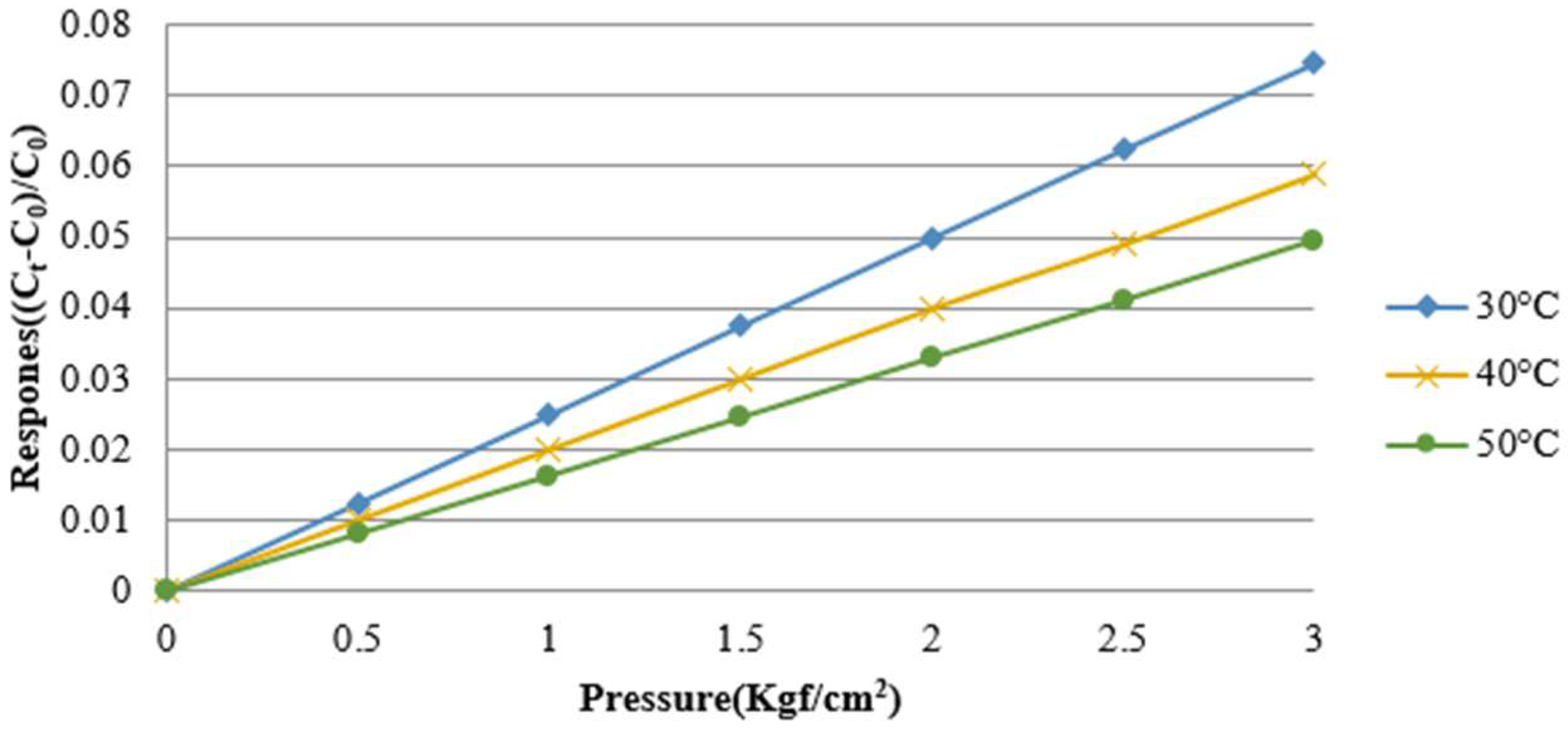

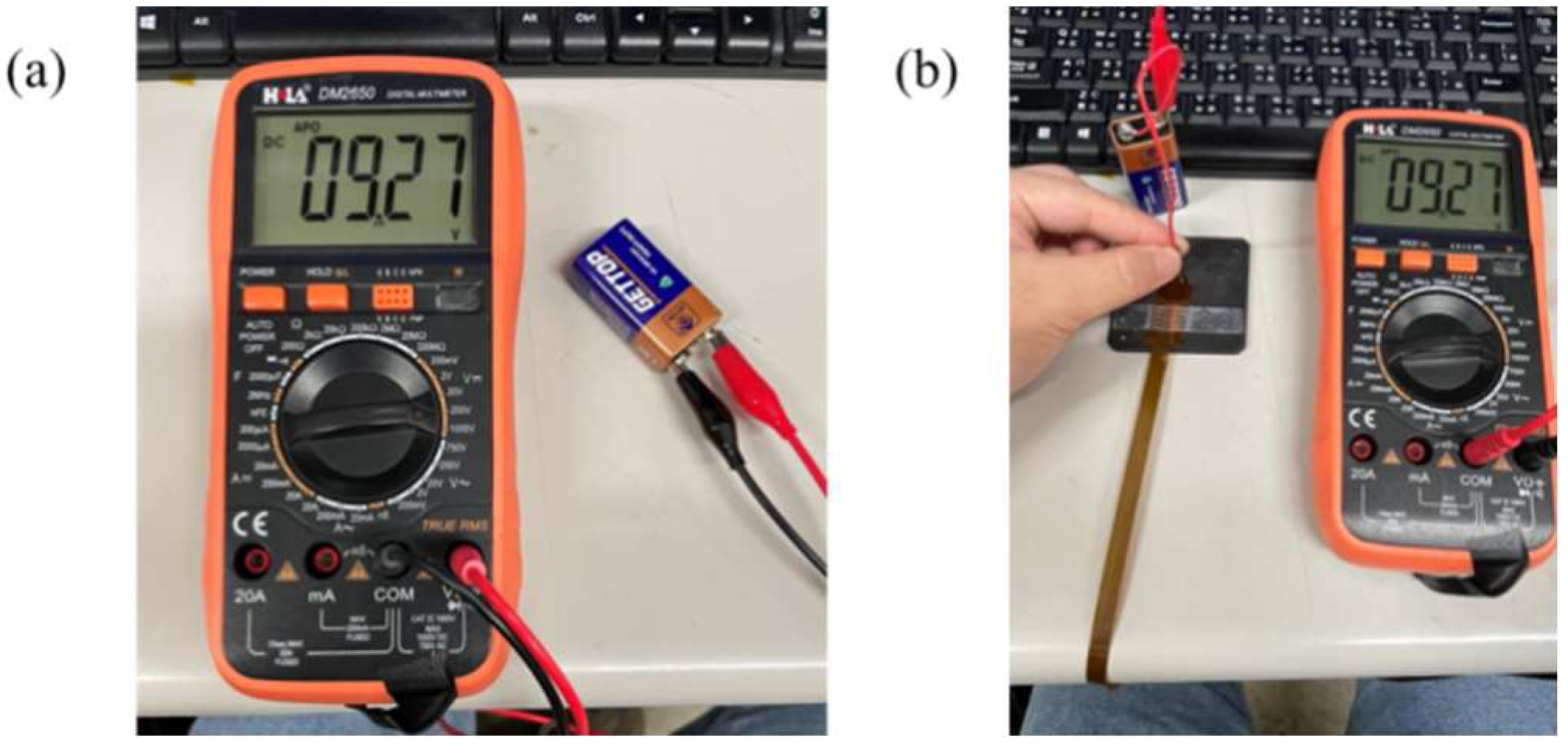

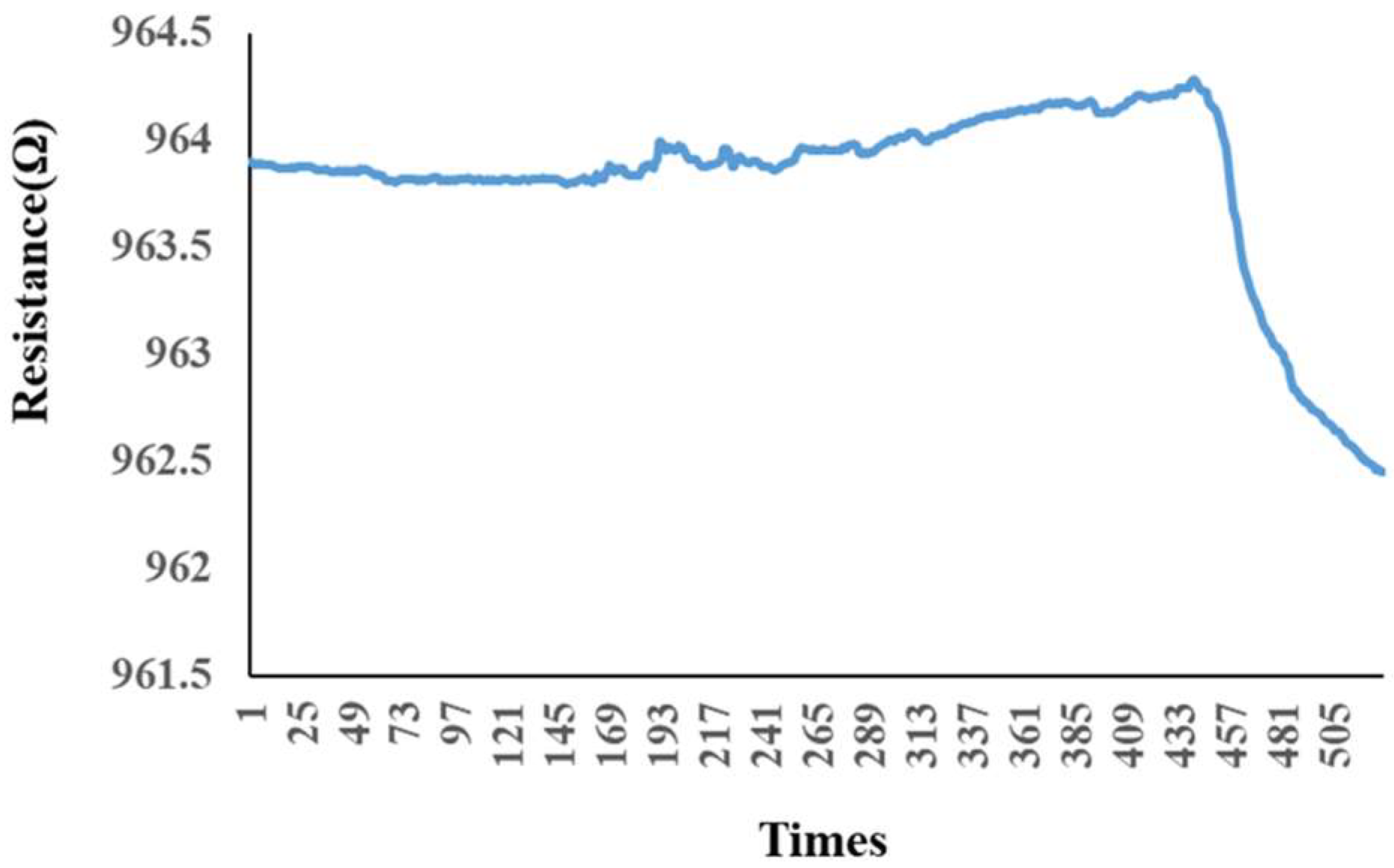


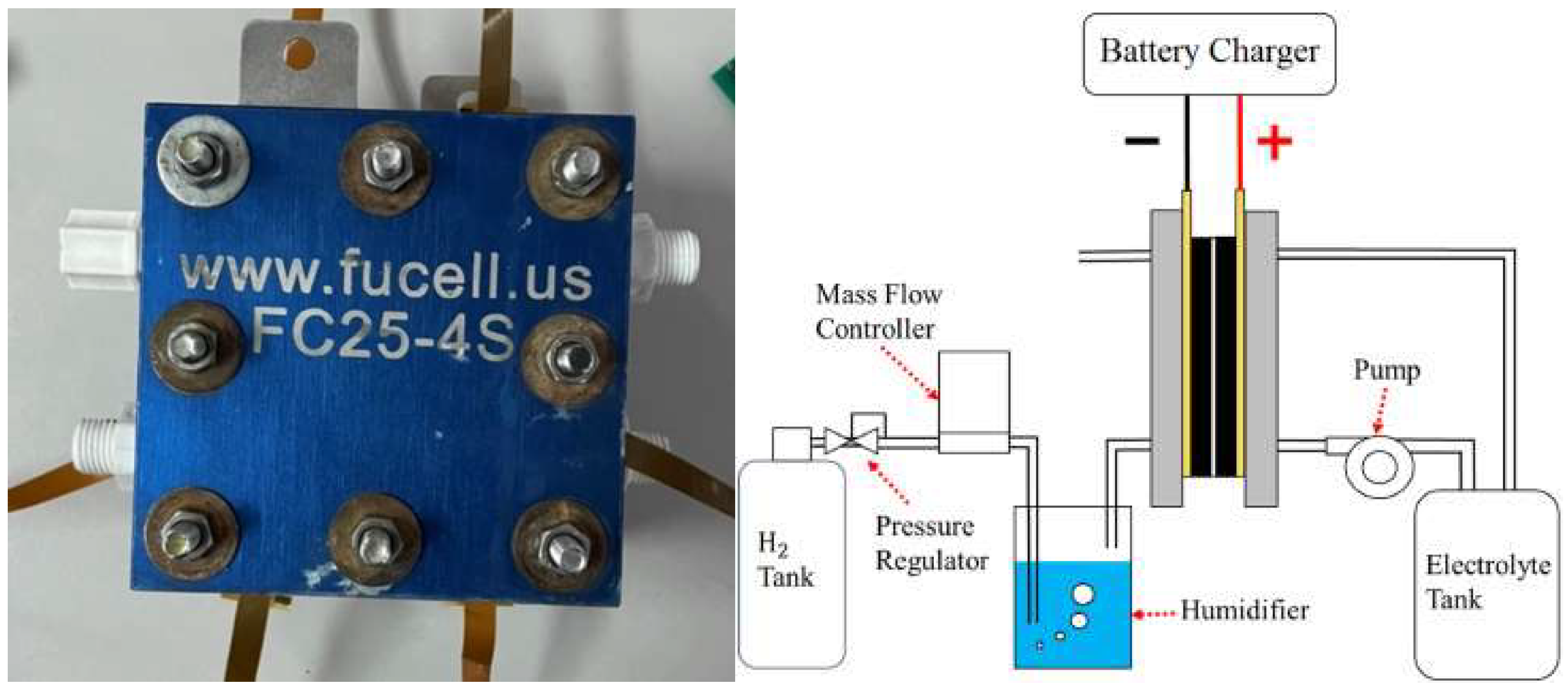



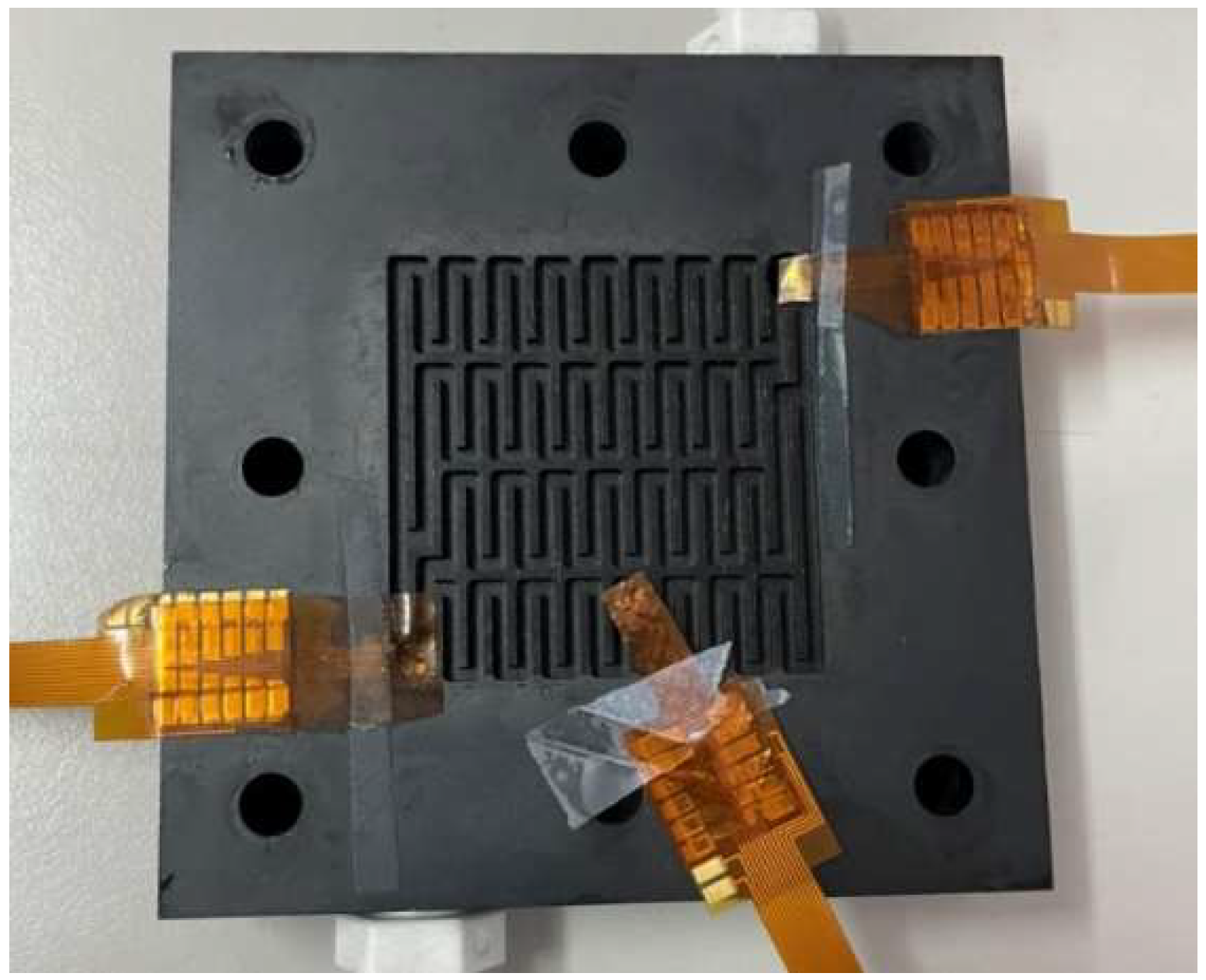
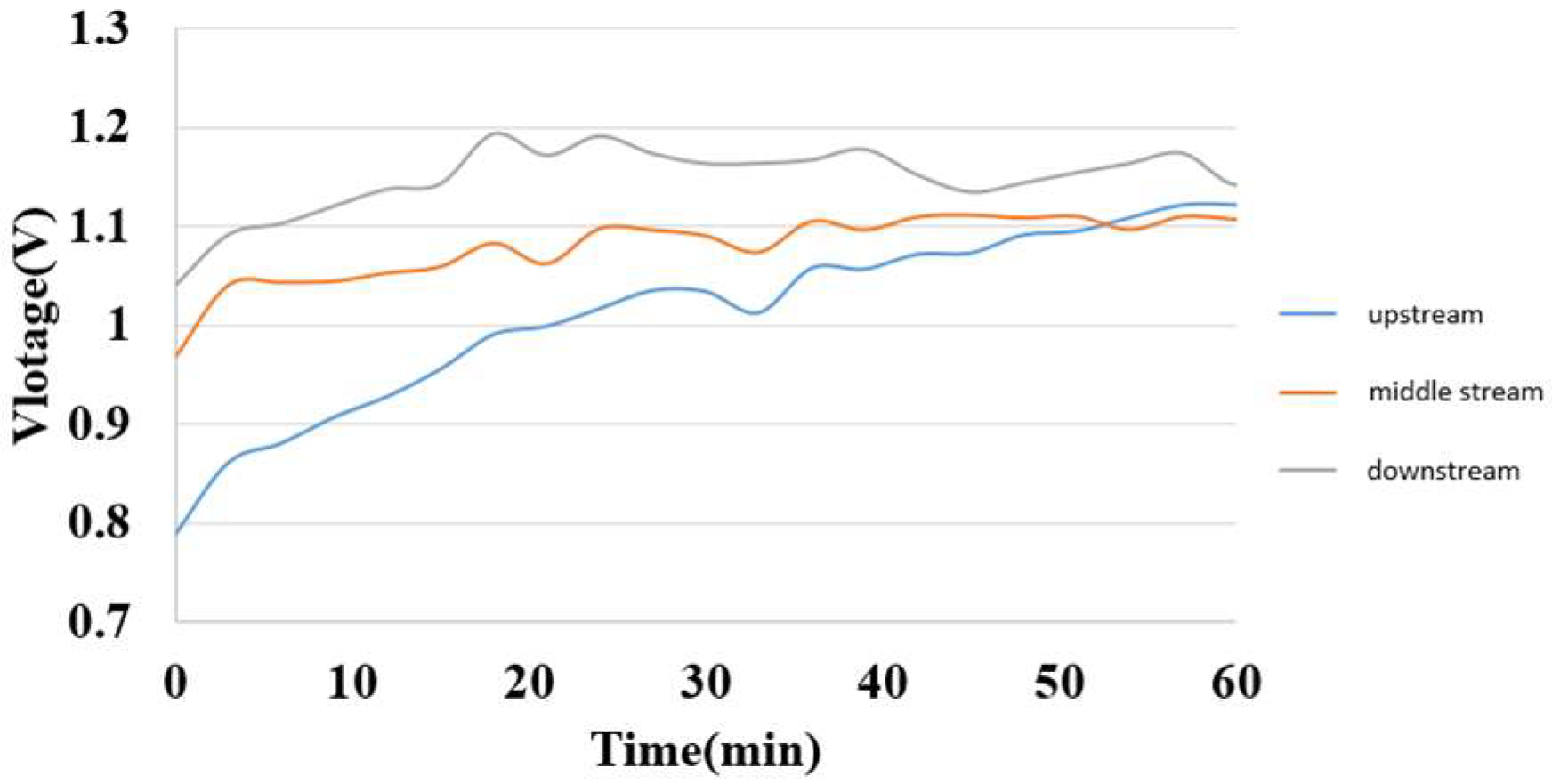
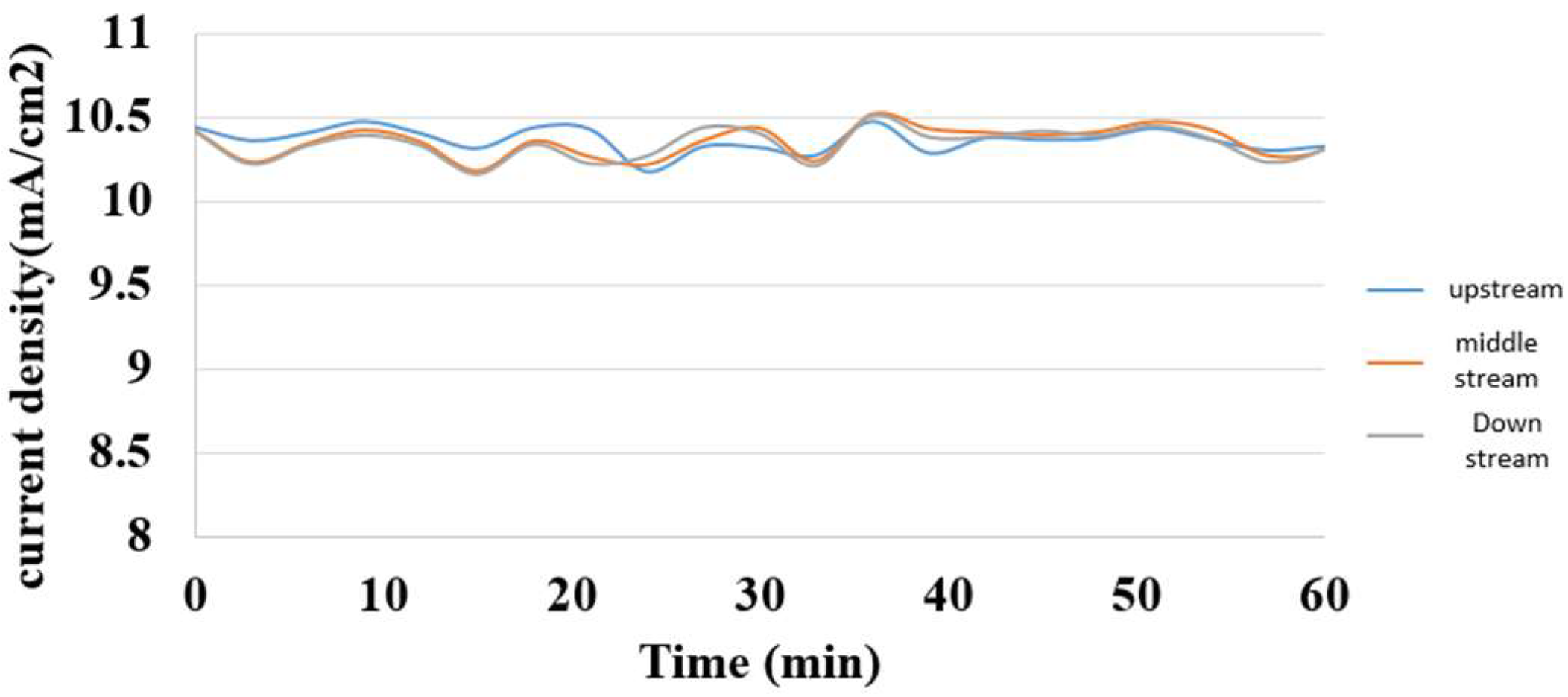
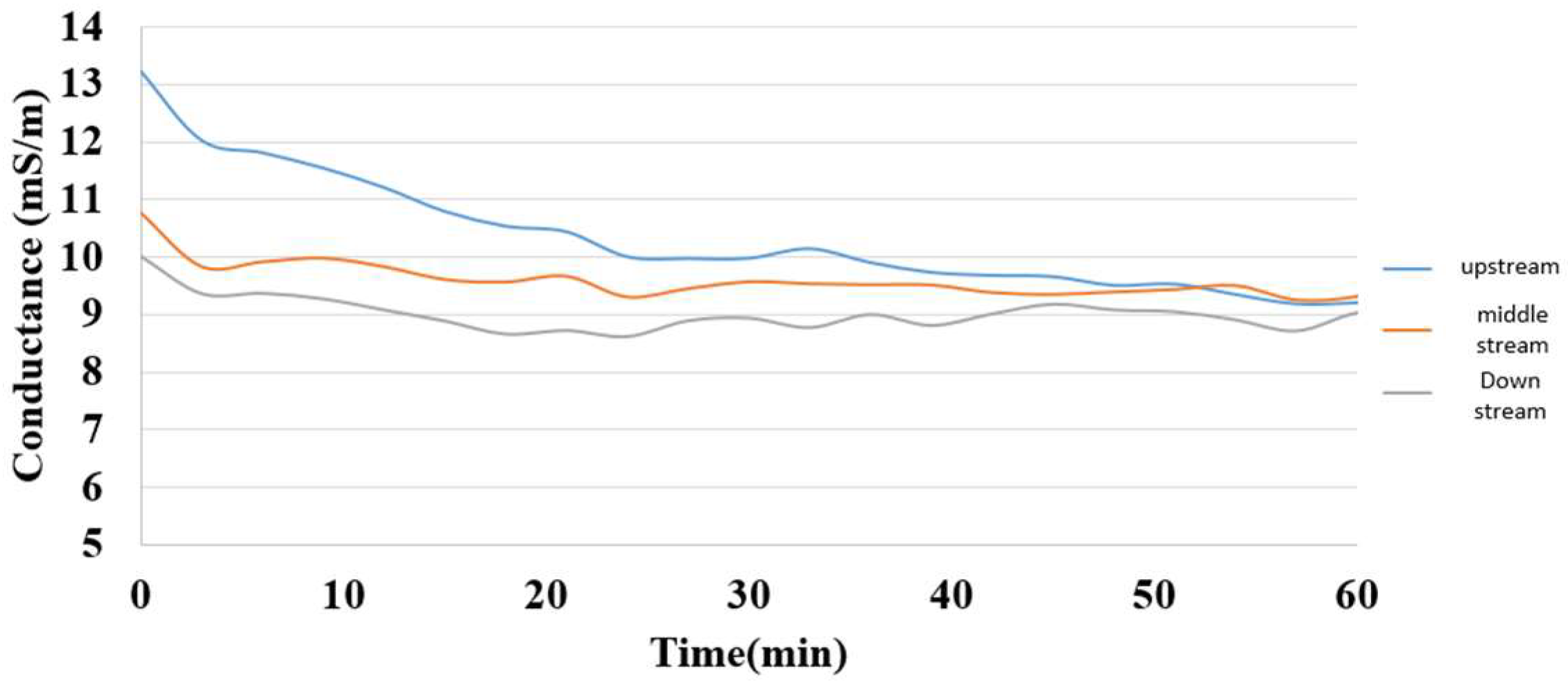
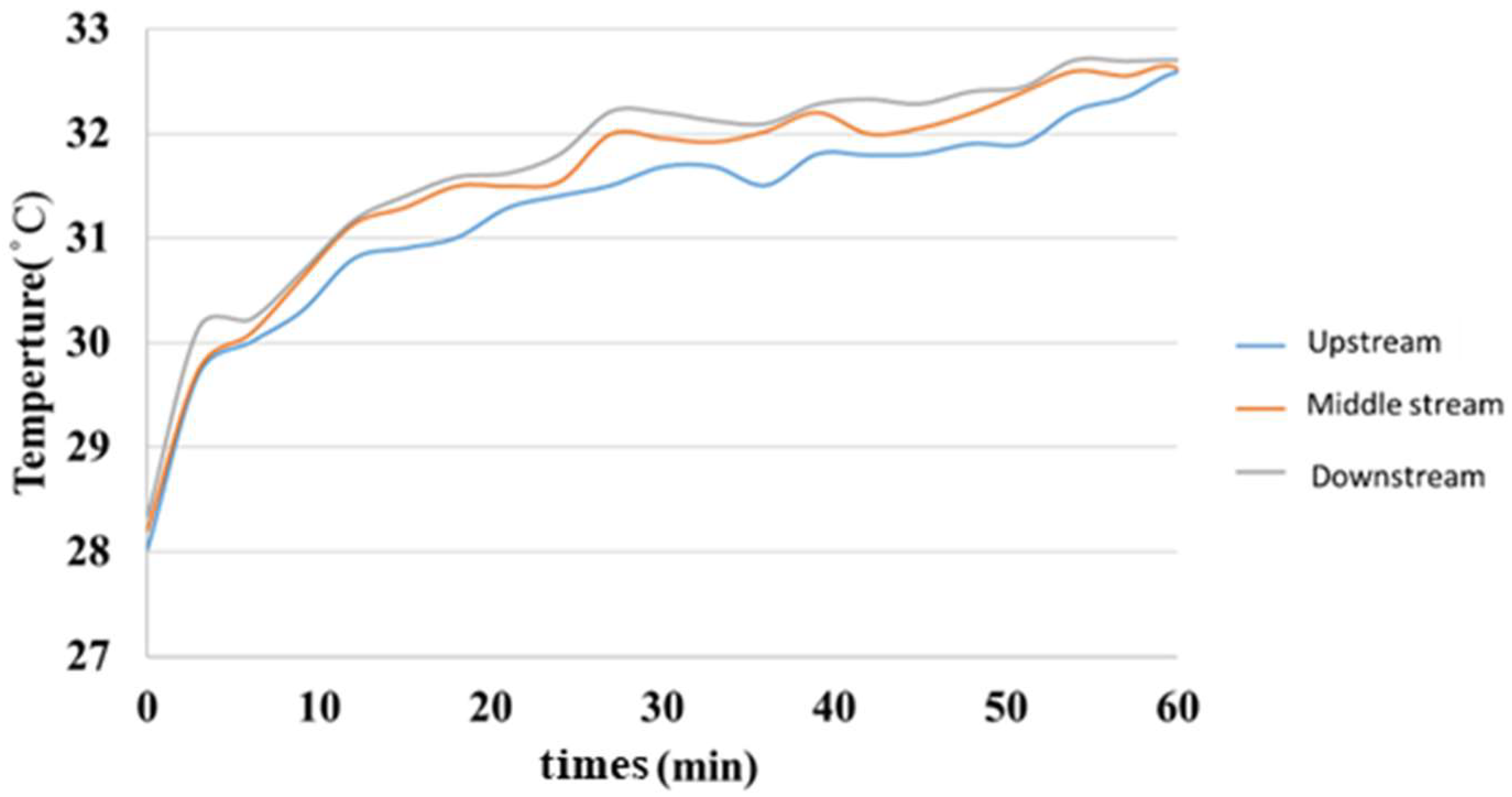


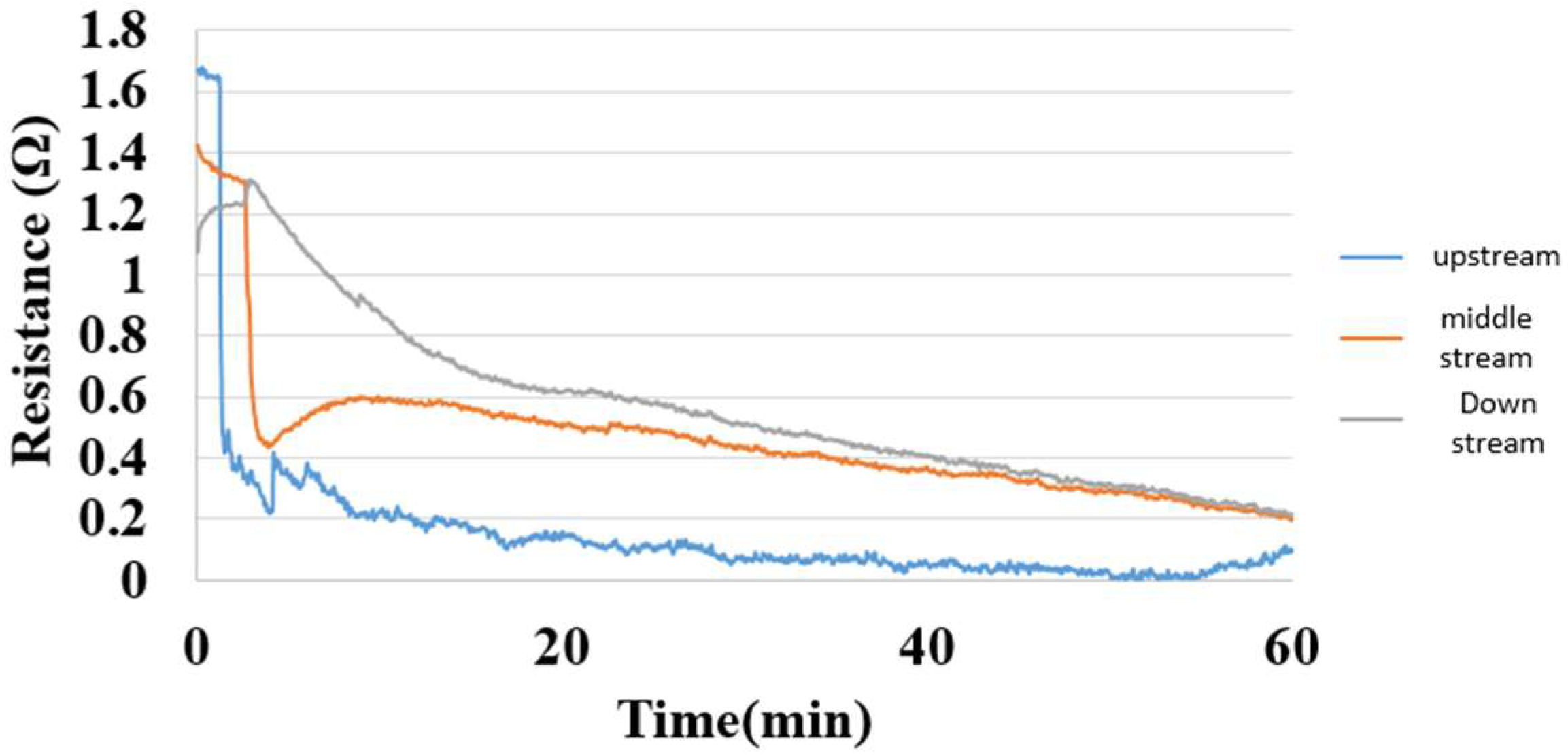
Disclaimer/Publisher’s Note: The statements, opinions and data contained in all publications are solely those of the individual author(s) and contributor(s) and not of MDPI and/or the editor(s). MDPI and/or the editor(s) disclaim responsibility for any injury to people or property resulting from any ideas, methods, instructions or products referred to in the content. |
© 2022 by the authors. Licensee MDPI, Basel, Switzerland. This article is an open access article distributed under the terms and conditions of the Creative Commons Attribution (CC BY) license (https://creativecommons.org/licenses/by/4.0/).
Share and Cite
Lee, C.-Y.; Chen, C.-H.; Chen, Y.-C.; Jiang, X.-F. A Flexible 7-in-1 Microsensor Embedded in a Hydrogen/Vanadium Redox Battery for Real-Time Microscopic Measurements. Membranes 2023, 13, 49. https://doi.org/10.3390/membranes13010049
Lee C-Y, Chen C-H, Chen Y-C, Jiang X-F. A Flexible 7-in-1 Microsensor Embedded in a Hydrogen/Vanadium Redox Battery for Real-Time Microscopic Measurements. Membranes. 2023; 13(1):49. https://doi.org/10.3390/membranes13010049
Chicago/Turabian StyleLee, Chi-Yuan, Chia-Hung Chen, Yu-Chun Chen, and Xin-Fu Jiang. 2023. "A Flexible 7-in-1 Microsensor Embedded in a Hydrogen/Vanadium Redox Battery for Real-Time Microscopic Measurements" Membranes 13, no. 1: 49. https://doi.org/10.3390/membranes13010049
APA StyleLee, C.-Y., Chen, C.-H., Chen, Y.-C., & Jiang, X.-F. (2023). A Flexible 7-in-1 Microsensor Embedded in a Hydrogen/Vanadium Redox Battery for Real-Time Microscopic Measurements. Membranes, 13(1), 49. https://doi.org/10.3390/membranes13010049





